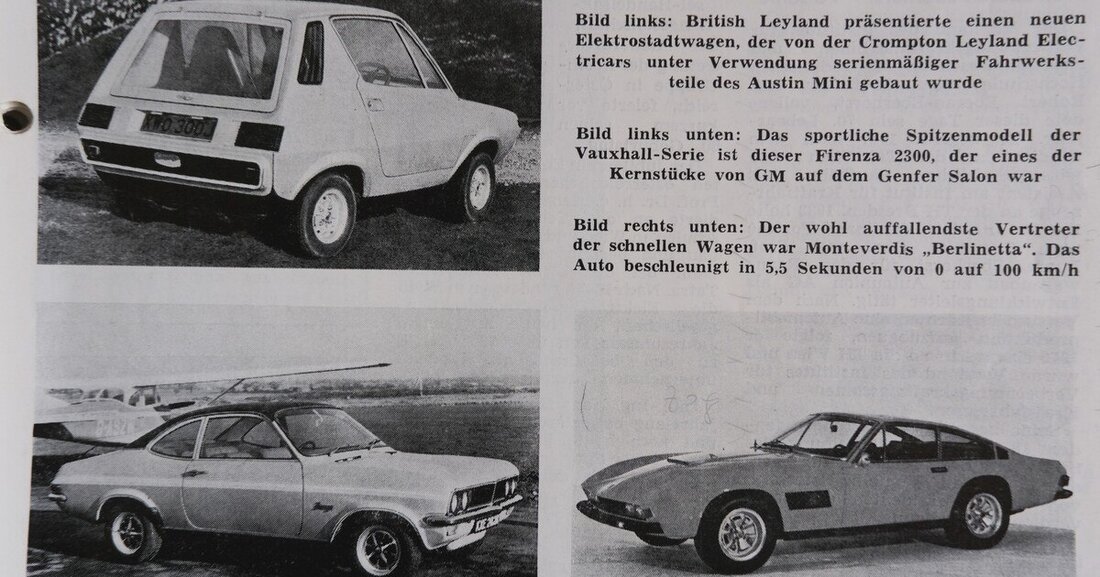Beginning and end of e-mobility
We set the time machine's year hand to "minus 50", turn the lever and climb out of the cabin in 1972.

Beginning and end of e-mobility
50 years ago, the “Kfz WERKSTÄTTE” reported on the Geneva Motor Show, which featured a special show entitled “Our Air in Danger”. The highlight of this exhibition was the first model from British Leyland that was completely emission-free. The two-seat electric city car was built by Crompton Leyland Electricars using standard Austin Mini chassis parts. It was powered by two 3.9 hp electric motors that were powered by a 24-cell 48-volt battery. This meant that the E-Mini achieved a top speed of 55 km/h and a range of 65 kilometers.
The body was designed by designer Giovanni Michelotti - and from today's perspective, the question arises as to what was going through the design genius's head at the time. After all, he had previously designed some irresistibly sleek cars such as the Renault Alpine prototype or the Maserati 5000 GT Alemanno. In any case, he didn't do emissions-free transportation any favors when he turned the pretty Mini Cooper into a vehicle whose proportions were a slap in the face to every car aesthete. With his careless design, Michelotti managed to nip electromobility in the bud right from its inception. The combustion engines of the sporty top models from Vauxhall and Monteverdi, wrapped in comparatively desirable sheet metal, celebrated a brilliant success with the public in Geneva.

 Suche
Suche
 Mein Konto
Mein Konto